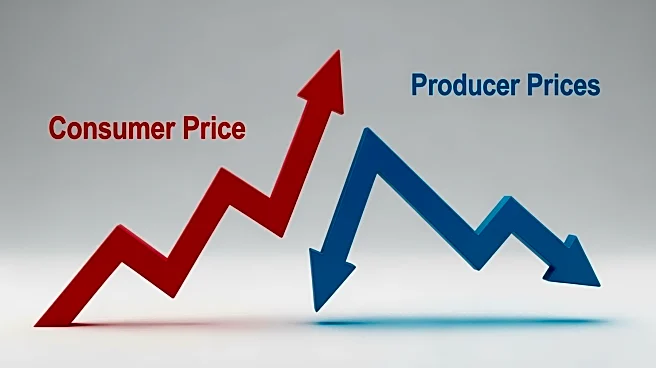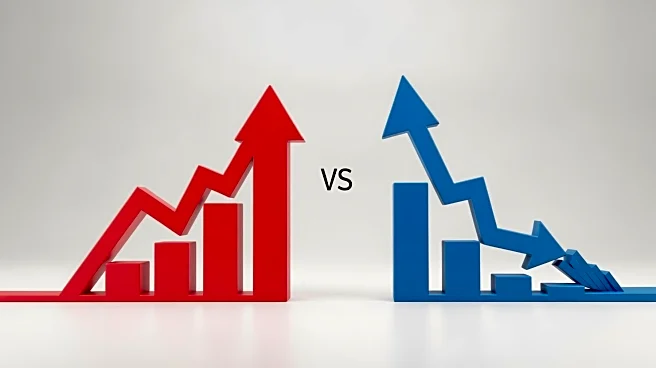What's Happening?
China's consumer price index rose by 0.2% in October, reversing a previous decline, driven by holiday demand. The National Bureau of Statistics reported this unexpected increase, contrasting with economists'
forecasts of a 0.1% drop. Core CPI, excluding volatile items, climbed 1.2%. Despite easing factory-gate deflation, deflationary pressures remain, prompting Beijing to prioritize breaking the cycle of weak spending and investment.
Why It's Important?
The rise in consumer prices indicates a temporary boost from holiday demand, but underlying deflationary pressures persist. This situation poses challenges for China's economic growth, as persistent deflation can lead to delayed consumer purchases and reduced profit margins. The government's efforts to combat deflation are crucial for maintaining economic stability and achieving growth targets.
What's Next?
China's government may continue implementing policies to stimulate demand and counteract deflationary trends. The focus on stabilizing prices and supporting economic growth will likely involve measures to enhance consumer confidence and encourage spending. The effectiveness of these policies will be critical in shaping China's economic trajectory.
Beyond the Headlines
The deflationary pressures in China reflect broader global economic challenges, including weak demand and trade uncertainties. China's response to these issues will influence international markets and economic policies, highlighting the interconnectedness of global economies.












